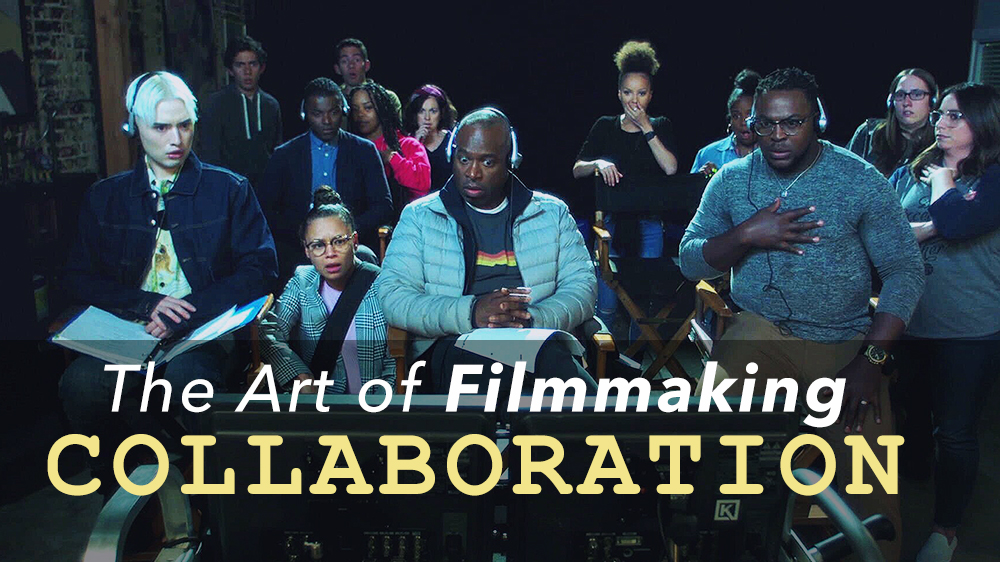The Art of Filmmaking Collaboration
The better you collaborate, the greater your chance for a successful film. That’s because, at its highest order, filmmaking collaboration occurs between various teams and departments to make a vision a reality. The goal is to work cohesively and work as a unit to boil down all the floating ideas, opinions, and possibilities into one central message.
The actor Michael Keaton once put it fittingly, “Filmmaking is the ultimate team sport.”

Photo by Steven Lippman/Stockland Martel (Parade)
Documentary filmmaker Ramona S. Diaz takes this summation a step further by saying, “It’s a cliche that filmmaking is a team sport. However, let me just say it again: filmmaking is a team sport.”
Teamwork equals collaboration
Whether it’s a major motion picture like the latest SAW film Spiral or an Indie darling like Frances Ha, there’s a lot of work that goes into storytelling, creating the visuals, the sound, and building it all out in post. This sentiment rings true regardless of large-scale teams and even three-person teams.
With their award-winning short film Second Team, director Ria Pavia and cinematographer Rob Arnold tells a unique story about stand-ins working on set and the silliness and hard work that takes place behind the scenes. As an indie film, Second Team was a labor of love that took time, and plenty of collaboration to make.
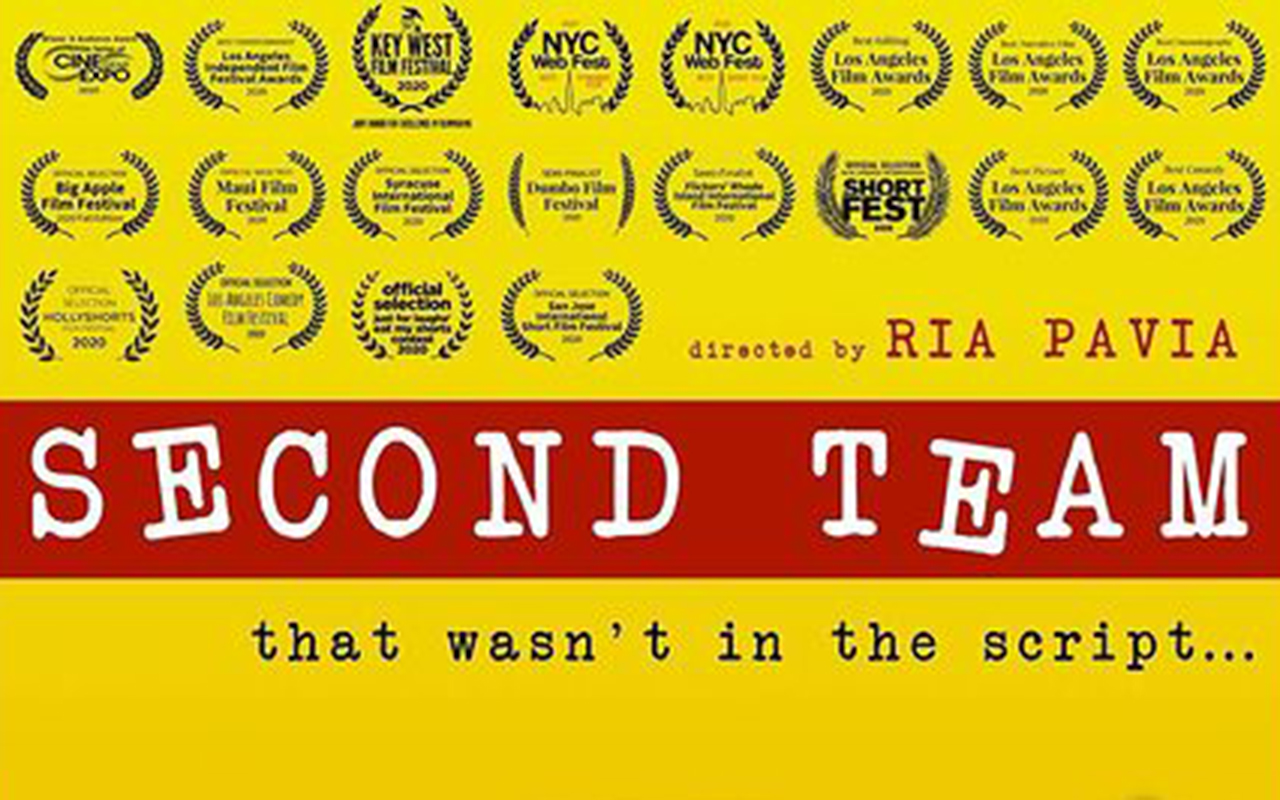
Fortunately for us, Ria and Rob share advice from their experience collaborating together to earn those valuable laurels.
But first…
1. What is filmmaking collaboration?

Photo by Second Team film
“The biggest thing I have realized was that you have to choose your collaborators very carefully and that not everybody can like you. The process of filmmaking is so difficult, there’s no point in doing it unless you can do it the way you want.” — Peter Capaldi, Doctor Who star
By taking a film apart you can see how all the hard work is distributed between departments. For example, the art department helps make your location feel real. The gaffer and G&E set up the lights and work together with the camera team. Production ensures that, well, production runs smoothly from making sure everyone gets to work on time to coordinating meals with crafty.
However, at its heart, you have the script from the writer that serves as your blueprint, the vision from the director, and the visual execution from the cinematographer.
Small crews to large-scale productions
Now, let’s take a moment to note that some films with larger budgets may have enough money for an art department, production, full camera and G&E team, among others. But, as we mentioned above, even if you’re working with just one or two friends, you can still stand to learn proper collaborative etiquette.
So, why is filmmaking a collaborative effort? Well, there are many factors at play and professionals who are expertly trained in their specific fields. The goal then is to have a constant stream of communication in order to unify ideas.
2. Where to begin collaborating?
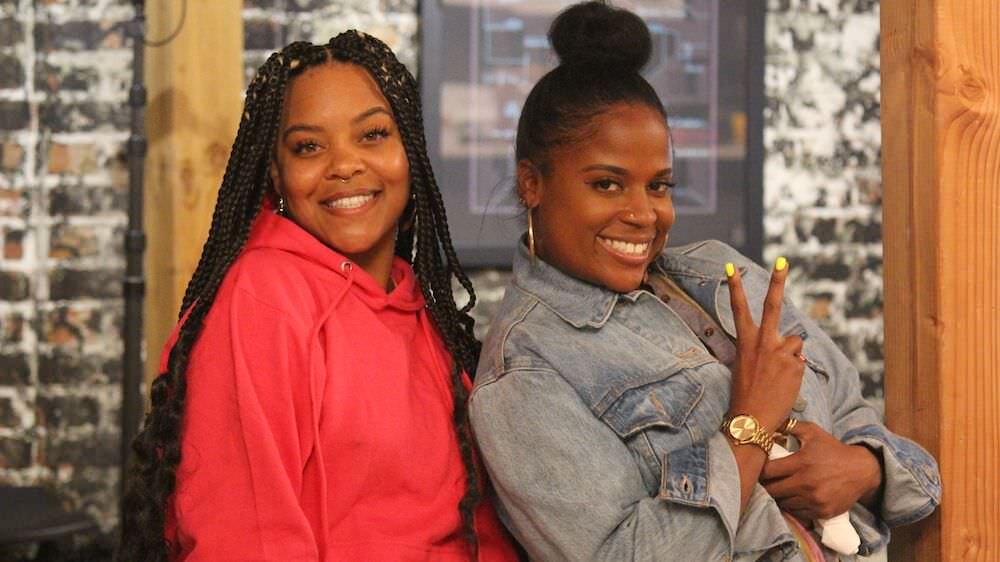
Photo by Second Team film
The best starting point for filmmaking collaboration is with a simple conversation. You don’t need to dive into the details in your first meeting. You’ll have plenty of other meetings for that. (And if you’re dealing with someone who won’t give you the time, then take that as an early warning sign.)
Take the case of Rob and Ria, who hatched the idea for their short film while working together on the show Grown-ish. Ria was an acting coach for the series and Rob was a Steadicam operator. They’re each working up their respective ladders with Rob establishing his career as a director of photography (DoP), and Ria focusing on her role as a director.

Rob Arnold (DP), Ria Pavia (Director), Anni Weisband (Writer)
Start talking with like-minded filmmakers
Ria, having recently committed to the next chapter in her career as a director, was in the early stages of settling on an idea for a project. So, when she saw Rob’s filmography, she took particular notice. “I really admired Rob’s work as an operator,” she says, “I also saw some of the short films that he had, and I dug what I saw.”
Ria’s career in the entertainment industry spans over 30 years where she’s worked as an actor, staff writer, and director for plays and musicals. Rob began his career in Chicago as a grip and worked his way up to the camera and electric departments for TV and films such as La La Land, Furious 7, Scandal, Grown-ish, Big Little Lies, and The Walking Dead. As a cinematographer, Rob has worked on various short film projects and the Netflix sketch show Astronomy Club.
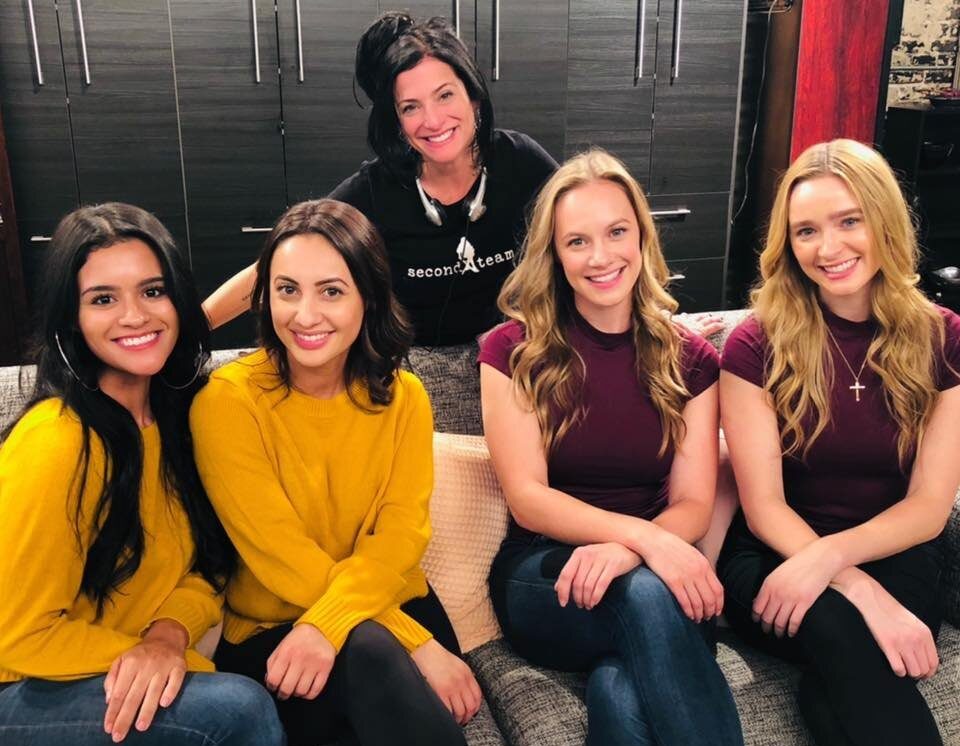
BTS from Second Team
It was while talking with the script supervisor when Ria came up with her idea. The scripty was telling her a quirky story about second-teamers while on production in Alaska. This got the juices flowing for Ria and she eventually pitched an idea to another colleague of hers Anni Weisband, who wrote the script for Second Team in the span of a week.
Ria recalls, “When she emailed it to us, she said, ‘Here’s the rough draft. I hope this is the flavor that you want’ — you know, a little bit tentative. And it was exactly what I wanted, and actually ended up being almost precisely what we shot 9 months later.”
3. Break down ideas through collaboration

Photo by Second Team film
When breaking your script down, be open to ideas and don’t be afraid to offer your own. It’s important to make your voice heard but to also listen patiently to others. Prep requires a lot of time and looking at your circumstances through multiple lenses. There’ll be challenges along the way but this is also where you can get creative. Especially if you’re working around an idea with a lot of “meta” in it.
When looking back, Rob says, “I was like how do we separate this world? Because we’re not like in the sitcom world for real, for real. So, like, what do we do to get out of it? Since we’re not gonna live here? And we just started pontificating idea after idea after idea. And then I realized, oh, what if we started in this world, and it looked like a traditional sitcom with a multi-camera set and then we pull out of the monitor and video village and reveal that we’re behind the scenes in the world. Then, everything else takes place.”
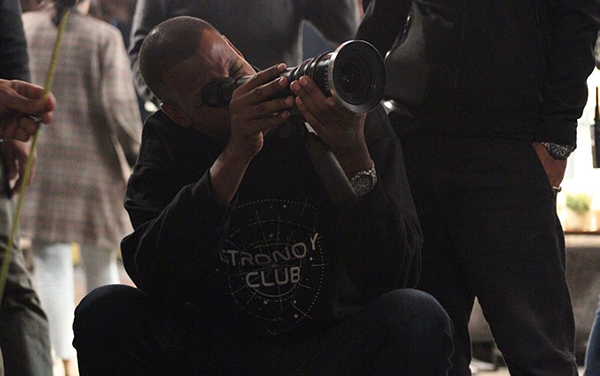
Rob Arnold framing a shot up
Ria was open and excited about the idea and they agreed on this approach. Think of ideas like seeds. You need to nurture and let them blossom into fully developed concepts.
Shorter productions need more collaboration
Since they only had 2 days of production, they had to cover all their bases. In fact, they only had a video village for their first day. The story was centered around a TV show, but they wanted it to feel like classic cinema. Rob mentions that when prepping, they had to figure out creative ways to get the shots and transitions while avoiding beating the audience over the head.
Rob and Ria concluded that their greatest asset during production was their familiarity with their preparation. All in all, their prep was about 2 months mostly during lunches and weekends. That’s because successful filmmaking collaboration means taking the time to amply dissect and prep the work. Even if you do so via texts and emails. As long as everyone is fluid and responsive, this can be an effective method.
4. Collaborating as a director and cinematographer
This is one of the tightest unions on the whole set. On one hand, you have the director whose vision needs to be peeled off the page, and on the other hand, the cinematographer must figure out how to articulate it. It’s a tricky balance and requires transparency and solid communication skills.
Ria explains, “I think a willingness to be pliable to know the things that are really important to you that are non-negotiables. Versus you know, being open and to somebody else’s creative vision and taking that in because I’m a pretty opinionated person, and so is Rob. So it would have been very easy for us, I think, to have said, ‘No, no, it’s going to be this way. No, it’s going to be that way,’ but it was very collaborative from the beginning where we would shoot each other texts of images from different shows that we saw. [For example,] I really liked the way the shot goes down. What do you think about the overhead when the girls are tossing on the ground or, you know, here are some colors that I’m really into just like random stuff back and forth. And I think that doing that early on, and being open to each other’s points of view, and then just spending a lot of time in prep going over each scene, each shot, each transition [was beneficial].”
Together they spent a lot of time on the script, designing shots, and referencing other shows, then scouting upon scouting while considering more shots. It was all a lengthy yet worthwhile process!
5. Filmmaking collaboration with your team

BTS Second Team
On the indie level, sometimes there’s value in reaching out to your team about things out of their wheelhouse. Use your best judgment when you reach out, but typically for smaller productions, you may be working with people that you’ve already built a rapport.
When asked what he looks for in potential team members, Rob says, “Is this person collaborative, you know, like, that’s huge, because like, if we can bounce ideas off each other, it just ebbs and flows. And then someone who’s like [Ria mentioned] is willing to be innovative, and try new things and take risks and someone who understands the filmmaking process. Because there’s a lot of filmmakers in our town and across the country that claim to be filmmakers, but sometimes don’t necessarily know the intricate details that go into the process, but they claim they do. So like finding someone who really understands and knows all concepts of filmmaking. And usually, that just kind of comes from a conversation, like the things that they gravitate towards the experience that they’ve had onset. So yeah, that’s kind of pretty much what I look for.”

Photo by Second Team film
For instance, when Rob learned from their production designer of a “stupendous” soundstage location that was expansive and had room for all the equipment along with a holding area for actors and production. That way, everything could be conducted in one contained building.
Calling in a few favors
In another case, they didn’t have the budget to hire a visual effects (VFX) artist on set, but luckily Rob had a friend who works at The Mill, who connected him with a VFX artist who did him a favor and walked him through the process. Rob’s past experience was useful to close any gaps in practice he might have had. However, without this connection and outside collaboration, he wouldn’t have been able to execute the visual effects in production, which would have led to a lot of work in post-production.
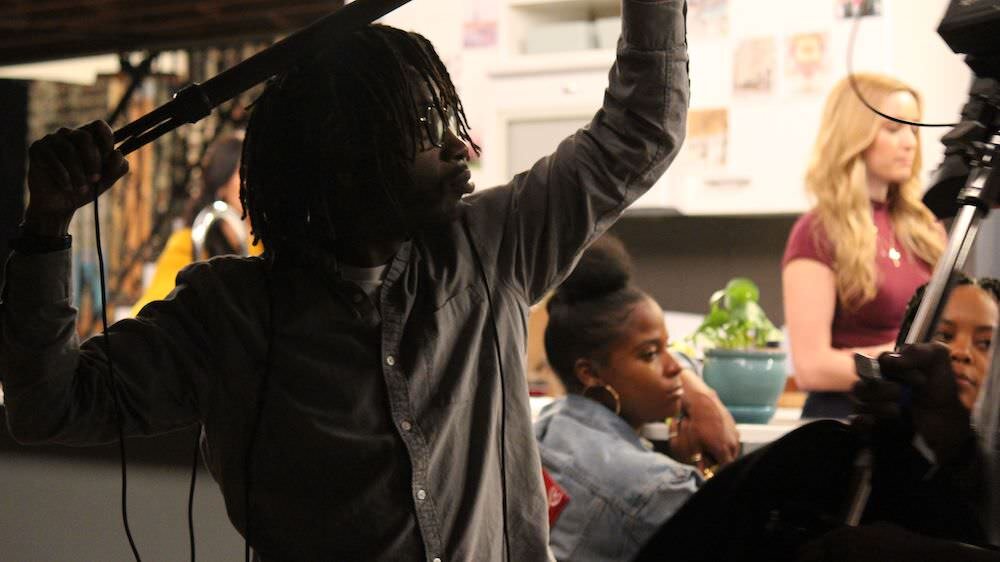
Photo by Second Team film
Ria and Rob even extended this same respect to their production assistants (PAs) which, let’s be honest, isn’t always done. A casting director was used to get some of the leads, but the smaller roles were left to them. So, they had auditions and had people send in tapes of themselves. They opened up the audition to a PA Akil Jackson who they worked with on Grown-ish. “He gave the best reading,” smiles Ria, “I wanted whoever bodies the part and he crushed it.”
And Akil got the role!
6. How to work through challenges
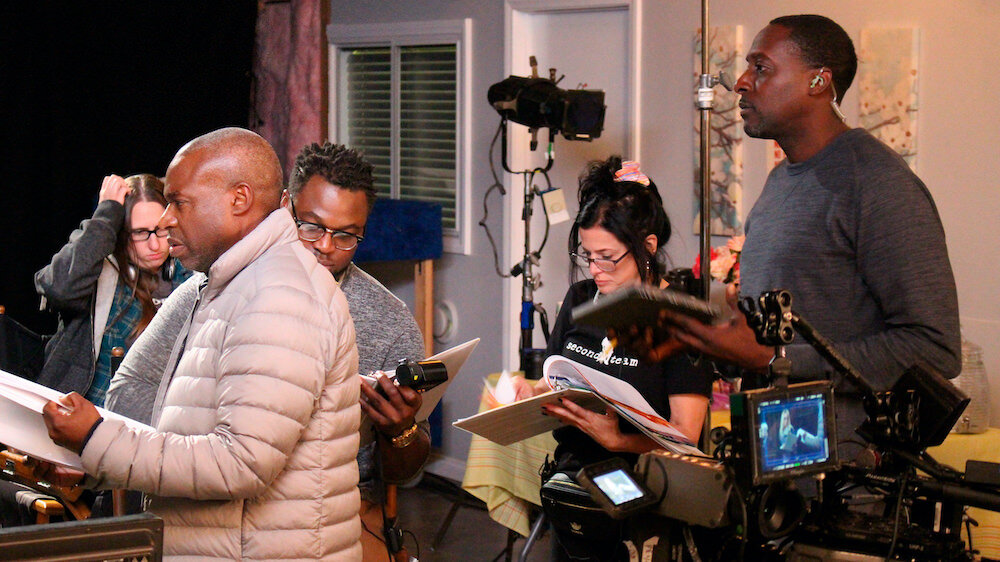
Photo by Second Team film
Every production comes with its own set of challenges and sometimes things are bound to go wrong. Maybe a light you need doesn’t strike and you need to send a PA to retrieve another one from the rental house. Or, there’s a shot that takes too much time and you lose more of your day than you realized.
Effective filmmaking collaboration ensures that you have a Plan A, Plan B, and even a Plan C, if not more. Rob enlisted the services of seasoned producers who Ria pleasantly recalls shielding her from some of the things that went wrong so she could focus her efforts on directing.
“I found out later some of the things that had happened,” she says, “and I’m so glad I had no idea at the time.”

Photo by Second Team film
We all deal with stress differently
When flipped the other way, Rob says, “Riya compliments me all the time. She says, “I don’t know how you handle the stress and the pressure because like, you don’t ever show it. I just, I’m just very even-keeled like I’ve seen yellers. And I like to take mental notes and watch others. When you’re on set and you’re under pressure and time is running out, have a backup plan. Or, you know, please and thank you go a long way, just being courteous and kind and not a curmudgeon to the crew. It’s the little things about being human and having that touch and being able to connect with people that really brings people together like a team. It sometimes feels like a sport. You and your teammates are like huddling up to figure out, how do we execute this without chewing each other’s heads off, because it’s so not necessary.”
Ria adds in, “That negativity or curmudgeon who [Rob] was just speaking of I think it can become infectious and in a bad way, obviously, and it can really poison all the set. And then if your team is not fit, you know, working together, that’s when things start to go awry typically.”
7. Filmmaking collaboration for film festivals
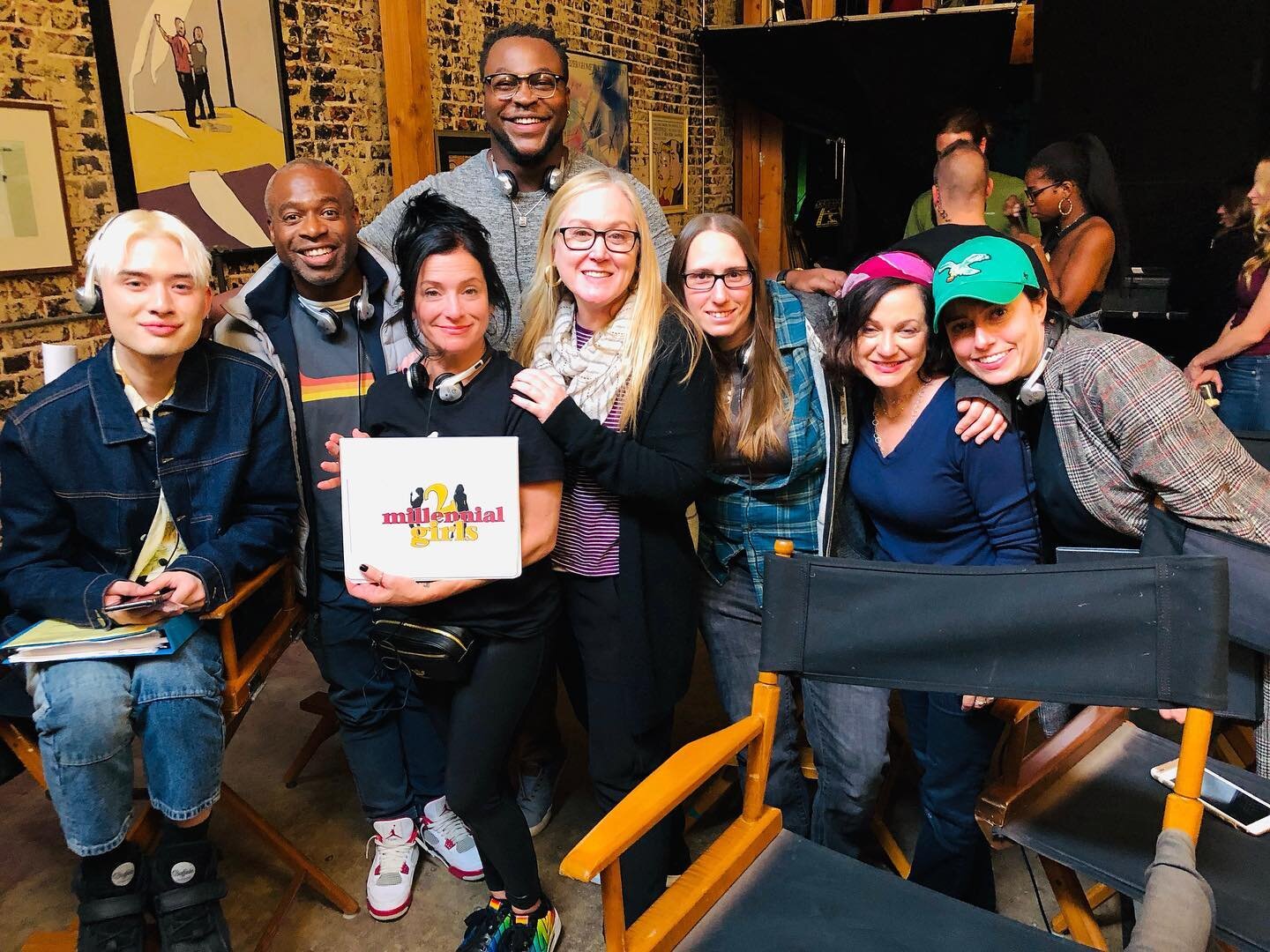
Photo by Second Team film
When you create a film, you should have a plan that goes beyond its creation. A film is meant to be watched and so you should develop a plan that gets as many eyeballs on it as possible. For many filmmakers, this means getting your film into film festivals.
Ria explains how she was new to this part of the process but learned on the fly. She says, “After a couple of people saw the finished product, they said you should really hit the festival circuit. I don’t even know what that means or didn’t at the time. But all right, sounds good. So I employed the help of someone who is very well versed in that world. And we set upon submitting to very targeted festivals. We didn’t cast a wide net. It was no Palm Springs, this one, this one, whatever. And then we just started getting, like you’re accepted. You’re accepted. Oh, my gosh, it was all a huge surprise and especially winning. It felt very — we were very honored to be included in a lot of these bigger festivals. I cried a few times. I think we’ve won 12 awards and have been accepted to 17 or 18.”
The awards kept piling in
Rob also has fond memories of this time, saying “I felt like once we hit the festival circuit, I felt like it was like every other week she’s like we got in this festival, and like there’s a group thread between us, the producers, and the writer. And we’re all like, ‘Oh my god, this is insane. Amazing, like go team, like, what else can we do?’”
They also won big at Cine Gear with Rob taking home Best Cinematography — a huge accolade! This included thousands of dollars of gifts that they now have for their next film. Some of the prizes include CS jams, plates, and a white mat worth $25,000. In addition to Best Cinematography, they also won Best Audience which was a surprise to the team.
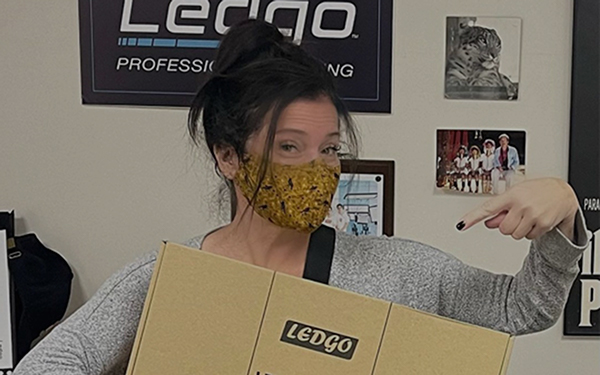
Photo by Second Team film
“Oh my God, we’re like, well, let’s just take all this gear.”
A bright future
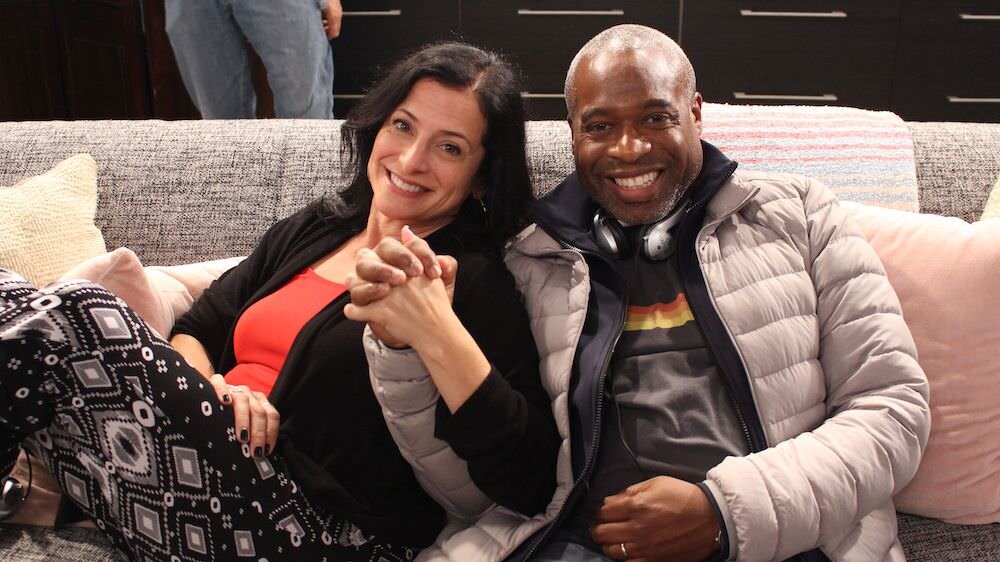
Ria Pavia and Phill Lewis. Photo by Second Team film
Filmmaking collaboration requires a lot of give-and-take. But it’s entirely unique from how you may collaborate in other fields. But if you follow the advice of filmmakers like Rob and Ria, you’re already halfway there.
It was Ria’s goal for this project to showcase her abilities as a director who could work with single cam, multi-cams as well as indie feature films. And with their awards as an indicator, it’s safe to say that the goal was accomplished.
When asked about a next project in the works, Ria says, “We can’t wait to make the next project. It’s been a very happy accident and a happy surprise. So many people have said it really does look like a proof of concept. I mean, it doesn’t seem like it’s just a short film.”
